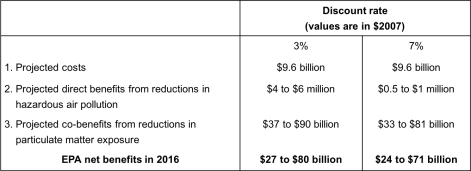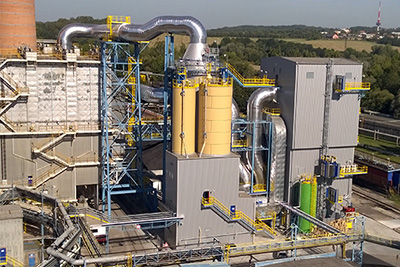Bay Area air quality board delays vote on anti-pollution rules
San Francisco Chronicle, by Joe Garofoli, June 2, 2021
After hearing five and a half hours of public commentary, the Bay Area Air Quality Management District postponed its scheduled vote Wednesday on whether to require refineries to install technology that would greatly reduce the amount of pollution they emit.
Board chair Cindy Chavez asked the board to reschedule its vote so the panel could have a “thoughtful discussion” of the proposals before it. The next meeting is tentatively scheduled for 8:30 a.m. on June 16.
The issue before the board involves fluid catalytic cracker units, commonly known as “cat crackers,” which are a major source of industrial pollution. The proposal would require refineries to install technology that reduces particulate emissions from the units by 70 percent, according to the air district.
A district analysis predicts that the new standards would have positive health impacts — particularly for low income communities of color that surround the Bay Area’s refineries and have borne the brunt of their environmental impact. In Richmond, the asthma rate is twice the state average.
The district has calculated that exposure to particulate matter from the Chevron refinery in Richmond increases mortality in the region by up to 10 deaths per year, while the PBF Energy refinery in Martinez adds up to six deaths per year.
The proposed changes to the Chevron plant alone could result in up to $27 million in health cost savings to those living nearby, according to an air district analysis, based on fewer days missed from work, fewer respiratory ailments and other health impacts.
Environmentalists pointed out that the technology has been widely used for years across the country, including in oil-friendly states like Texas.
“It’s hard to believe regulators in Texas 15 years ago valued their constituents’ lives more than Bay Area representatives do,” Jed Holtzman, a senior policy analyst with the environmental organization 350 Bay Area, told the board Wednesday. “So this should not be a complicated decision for you.”
Yet the refineries — backed by allies in organized labor who work at the plants — insisted that the cost to install the technology would be prohibitive, making the plants uncompetitive and leading to massive job losses.
The $800 million cost of implementation would “force us to close the Martinez refinery,” Timothy Paul Davis, PBF Energy Western Region president, wrote to the air district in April. That would put 600 full-time employees out of work, plus another 2,000 members of the local building trades union who work on other projects at the plant, said Kevin Slade of the Western States Petroleum Association, an industry group.
The air district found Davis’ estimate to be grossly inflated, estimating that it would cost just $255 million to make the changes at the PBF Martinez refinery and $241 million for the Chevron refinery in Richmond. The district found that the oil companies could pay for the cost of the upgrades by a one or two-cent per gallon fuel increase. Other speakers Wednesday were skeptical that PBF would shutter a refinery that it just bought in 2019 from Shell Oil for $1 billion.
Dozens of local union members and leaders — among the 198 people who addressed the board Wednesday — said they feared losing their jobs if the technology were mandated.
Andrew Scheiber, a Benicia resident who used to work for a refinery, was among the speakers skeptical that plant workers could find a “just transition” to another line of work should the refineries cut jobs.
“This ‘just transition’ everybody loves to talk about doesn’t exist,” Scheiber said. There are few other kinds of jobs that involve similar skill sets “and when they do come up there are hundreds if not literally thousands of applicants.”
A letter to the board signed by the leaders of six Bay Area building trades unions said: “Union members — your constituents — living and working in the Bay Area depend on these refinery jobs to raise their families well, put food on their tables, put their kids through college, and live a successful and fulfilling life.”
An alternative analysis conducted by UCLA’s Lufkin Center for Innovation found that new technology wouldn’t kill jobs, but rather create thousands more.
The UCLA report, conducted in conjunction with Communities for a Better Environment and the environmental research firm Inclusive Economics, found that installing the wet gas scrubbers would yield “thousands of engineering, construction, and other installation jobs, upwards of 4,600 jobs between the two refineries.”
“Our lungs can’t any longer,” said Zolboo Namkhaidorj, Richmond Youth Organizer for Communities for a Better Environment, after the meeting, urging the air district to approve the cat cracker rule.
“Refineries have mounted a massive misinformation campaign to sink this rule, threatening our communities with false doomsday scenarios,” Namkhaidorj said. “Shame on them, after decades of spewing pollution that has cost local Black, indigenous, and people of color families their health and livelihoods.”
Bonnie Lockhart of Oakland was one of several speakers Wednesday who questioned seeing the issue as one of workers versus greens.
“Why are we framing this decision as jobs versus the environment, when it’s really health versus corporate profits?” Lockhart asked.
Instead of suggesting that the only way to pay for the cost of the upgrades would be through layoffs or higher gas prices, Lockhart questioned why the discussion wasn’t focused on “the obscene profits” of the fossil fuel companies and the high salaries of its CEOs.
Her suggestion to the oil companies and their top executives: “Don’t buy a yacht this year.”
Joe Garofoli is The San Francisco Chronicle’s senior political writer.






You must be logged in to post a comment.